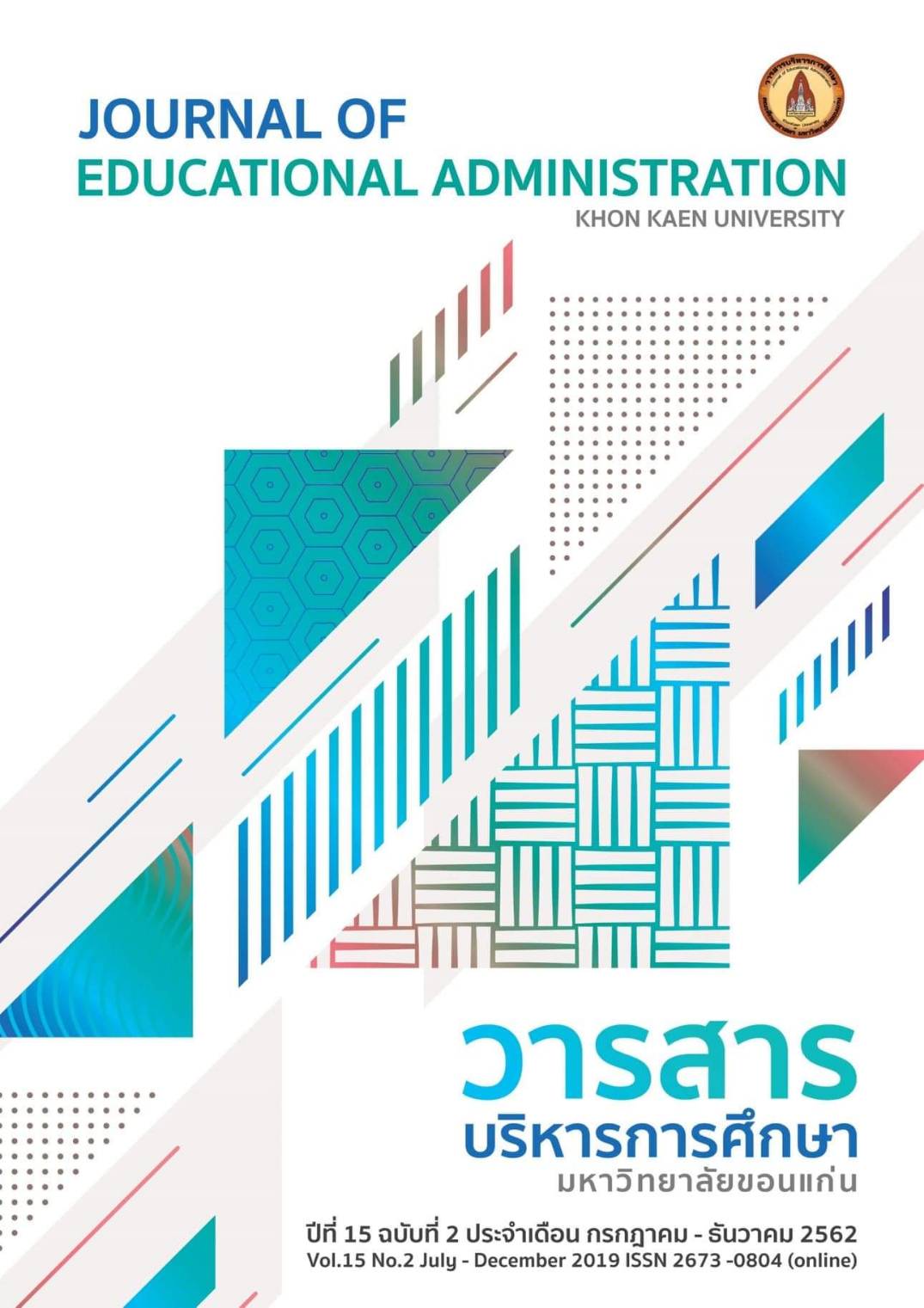AN INNOVATIVE SCIENCE AND TECHNOLOGY EDUCATION PROGRAM EVALUATION STUDY IN THE HIGH SCOPE PLAN
Main Article Content
บทคัดย่อ
This program evaluation study aims to evaluate one of the “High Scope Plan” (HSP) programs from the academic year 2011-2014. HSP policy supported by Taiwan Ministry of Science and Technology (MOST) tended to conduct several school-college collaborations and deregulation to develop innovative science and technology curriculum. This program evaluation study used testing, observation, focus groups, and interviews. In this HSP program, the chemistry class looked into bioenergy issue while the biology class looked into environmental tourism. This study showed: 1. The HSP policy launches the “school-college collaboration” can support STEM education. 2. Proper funding and deregulation can benefit Science, Technology, Engineering, and Mathematics (STEM) education, especially developing innovative curriculum. 3. For teachers, using alternative evaluation can be inclusive and supportive.
Article Details
เอกสารอ้างอิง
ACT. (2017). STEM education in the U.S.: Where we are and what we can do. Retrieved from https://www.act.org/content/dam/act/unsecured/documents/STEM/2017/STEM-Education-in-the-US-2017.pdf
American Association for Higher Education. (1993). AAHE’s new agenda on school/college collaboration. AAHE Bulletin, 45(9),10-13.
Archer, L., & Francis, B. (2007). Understanding Minority Ethnic Achievement. London: Routledge.
Chin, C. C. (2002). The Validation of the Test of Basic Scientific Literacy for the Use in Taiwan. Chinese Journal of Science Education, 10(3), 287-303.
Croll, P. (2008). Occupational choice, socio-economic status and educational attainment: A study of the occupational choices and destinations of young people in the british household panel survey. Research Papers in Education, 23, 243–268.
Cuseo, J. (n.d.). Collaboration Between Schools & Colleges, a.k.a., School-College Partnerships. Retrieved from http://uwc.edu/sites/uwc.edu/files/imce-uploads/employees/academic-resources/esfy/_files/ collaboration_between_schools_and_colleges.pdf
Falk, J. H., Dierking, L. D., Osborne, J., Wenger, M., Dawson, E., & Wong, B. (2015). Analyzing Science Education in the United Kingdom: Taking a System-Wide Approach. Science Education 99(1). 145-173.
Fensham, P. J. (2008). Science education policy making-eleven emerging issues. Retrieved from http://unesdoc.unesco.org/images/0015/001567/156700E.pdf
Fensham, P. J. (2009). The Link Between Policy and Practice in Science Education: The Role of Research. Science education, 93(6), 1076-1095.
Fitzpatrick, J. L., Sanders, J. R., & Worthen, B. R. (2011). Program evaluation: Alternative approaches and practical guidelines (4th ed.). Upper Saddle River, NJ: Prentice-Hall.
House, E., & Howe, K. (1999). Values in evaluation research and social research. Thousand Oaks, CA: Sage.
Judson, E. (2013). The Relationship Between Time Allocated for Science in Elementary Schools and State Accountability Policies. Science education, 97(4), 621-636.
King, J. A. (2005). Participatory evaluation. In S Mathison (ed.). Encyclopedia of evaluation. Thousand Oak, CA: Sage,
King, J. A. (2007). Making sense of participatory evaluation. New directions for program evaluation, 114, 83-86.
Kramer-Vida, L., Levitt, R., & Kelly, S. P. (2012). University/School District Collaboration Changes a Kindergarten Program. Kappa Delta Pi Record, 48(4), 178-183.
Lawrenz, F., Huffman, D., & Thomas, K. (2006). Synthesis of STEM education evaluation ideas. New Directions for Evaluation, 109, 105-108.
Lin, K. Y., & Williams, P. J. (2016). Taiwanese preservice teachers’ science, technology, engineering, and mathematics teaching intention. International Journal of Science & Mathematics Education, 14,1021–1036
MacDonald, B. (1976). Evaluation and the control of education. In D. Tawney (Ed.), Curriculum evaluation today: Trends and implications. (pp. 125-134). London, UK: Macmillan Education,
Micari, M., Light, G., Calkins, S., & Streitwieser, B. (2007). Assessment beyond performance: Phenomenography in educational evaluation. American journal of evaluation, 28(4), 458-476.
Morgenstern, C. F., & Renner, J. W. (1984). Measuring thinking with standardized science tests. Journal of Research in Science Teaching, 21(6), 639-648.
NSC. (2009). First round high scope plan. Retrieved from, http://highscope.ch.ntu.edu.tw/wordpress/?p=5249
NSC. (2013). Second round of High Scope Plan. Retrieved from http://highscope.ch.ntu.edu.tw/wordpress/ ?p=42436
OECD. (2016a). PISA 2015 results (Vol. I): Excellence and equity in education. Retrieved from http://dx.doi.org/10.1787/9789264266490-en
OECD. (2016b). PISA 2015 results (Vol. II): Policies and practices for successful schools. Retrieved from http://dx.doi.org/10.1787/9789264267510-en
Ryan, K. E, Chandler, M., & Samuels, M. (2007). What should school based evaluation look like? Studies in Educational Evaluation, 33, 197–212.
Samuels, M., & Ryan, K. (2011). Grounding evaluations in culture. American Journal of Evaluation, 32(2), 183–198.
Saw, G. (2019). The impact of inclusive STEM high schools on student outcomes: A statewide longitudinal evaluation of Texas STEM academies. International Journal of Science and Mathematics Education, 17(8), 1445–1457.
Tai, R. H., Liu, Q. C., Maltese, A. V., & Fan, X. (2006). Planning Early for Careers in Science. Science, 312, 1143–1145.
UNESCO. (2007). Perth declaration on science and technology education. Retrieved from http://www.icaseonline.net/perth.pdf
Weaver, L., & Cousins, J. B. (2004). Unpacking the participatory process. Journal of Multidisciplinary Evaluation, 1, 19–40.


